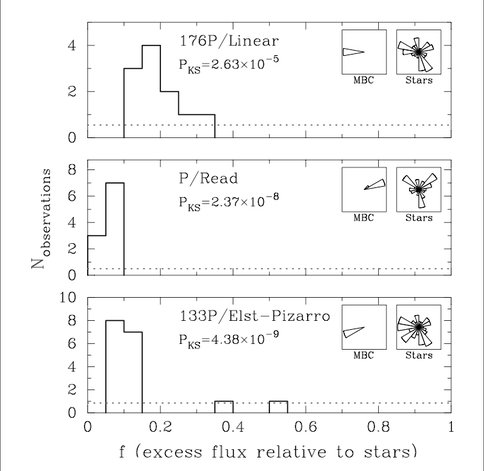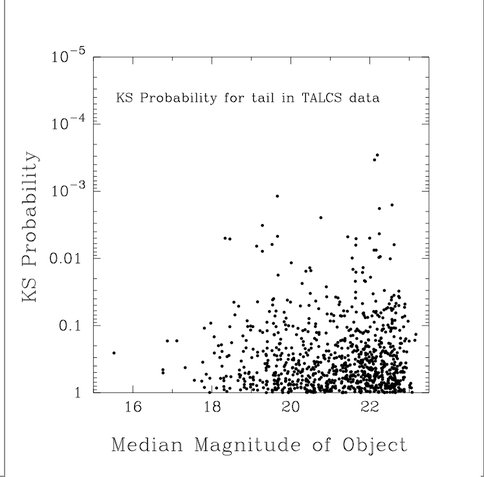2009 Annual Science Report
 University of Hawaii, Manoa
Reporting | JUL 2008 – AUG 2009
University of Hawaii, Manoa
Reporting | JUL 2008 – AUG 2009
TALCS Survey and MBCs
Project Summary
We have performed an automated search of the Thousand Asteroid Light Curve Survey (TALCS) for evidence of Main Best Comets (MBCs). We looked for both comae and tails using specially developed automated image processing techniques. Neither approach found any clear MBC candidates, although there was an unexplained excess of diffuse light in the same as a whole.
Project Progress
In 2006, Hsieh & Jewitt (Science, Volume 312, pp. 561-563) observed three asteroids with comet-like activity inside the main asteroid belt. These Main Belt Comets (MBCs) represent the third known reservoir of comets in the solar system, after the Oort cloud and Kuiper belt, and are a potential source of water for terrestrial planets.
We have employed two different search methods to find cometary activity.
1. We have constructed a non-parametric search algorithm that examines angular segments around an asteroid, and finds the brightest segment as a fraction of the source brightness. This figure of merit is then compared to stars from the same image, which are subject to the same systematic biases. The rank of the asteroid relative to its calibration stars is compared over many images using a Kolmogorov-Smirnov (KS) test to find the likelihood that an object shows excess light (a tail). Existing MBCs are readily detected over a series of 20 images (Figure 1)
2. We have constructed a similar approach to find comae instead of tails. Images of an asteroid are stacked over an observing run, in parallel with carefully chosen neighboring calibration stars. The final stacked asteroid image is then modeled as a sum of the stacked stellar image plus a coma model. A χ2 statistic is then used to ascertain whether a significant coma signature is present.
The first approach, tail detection, did not yield a significant tail detection (Figure 2). However, the overall ensemble of KS probability values disagrees with the null flat case, suggesting there may be an overall sub detection threshold signature of cometary activity among asteroids, an issue we will study further (Figure 3). The second approach also did not detect MBCs, but the presence of comae even in the four existing MBCs is a matter of debate.
This work is currently in the last stages of preparation for publication.
Detection of existing MBCs in UH 88” images using our method. All are found to high (p<0.00001) KS significance, shown in the deviation of the histogram from the dotted null hypothesis line. Insets show angular orientation of brightest direction.
KS probabilities of asteroids in the TALCS data. Small KS probabilities indicate likely MBCs. In a 924 asteroid sample, we would require a probability much smaller than 0.001 to flag an object as an MBC. No such detections are present.
A histogram of the KS probabilities in the previous figure. Although no individual detection is significant, the histogram as a whole shows a bias toward asteroids having more excess lights than stars of similar magnitude, at the 0.00001 significance level. We intend to explore this further to find whether this results from systematic effects, or is a real quality of the asteroid population.
-
PROJECT INVESTIGATORS:
-
PROJECT MEMBERS:
Robert Jedicke
Co-Investigator
Sarah Sonnett
Co-Investigator
-
RELATED OBJECTIVES:


